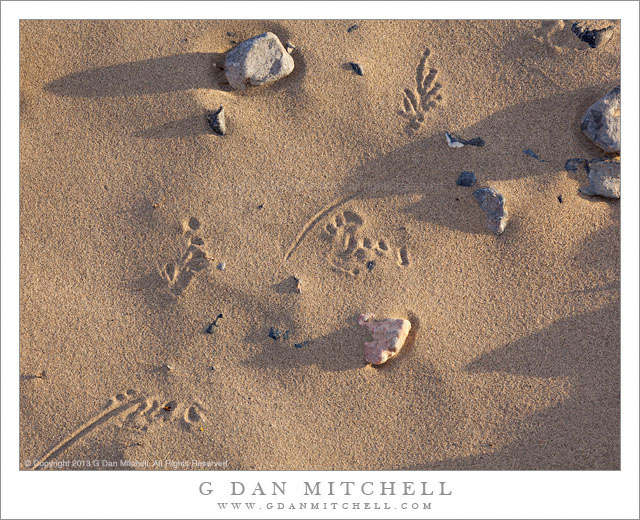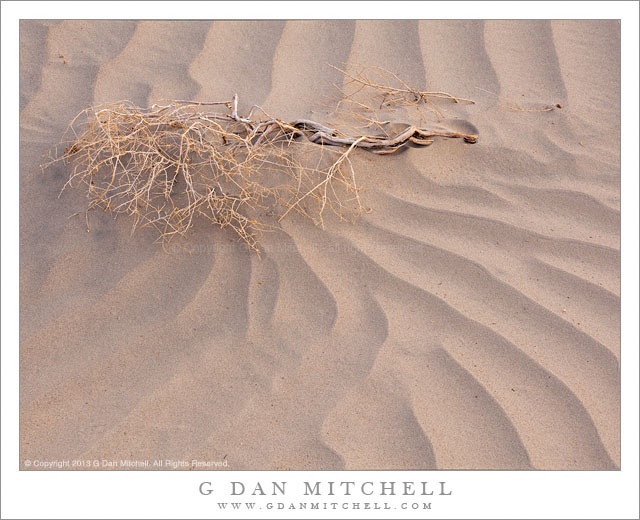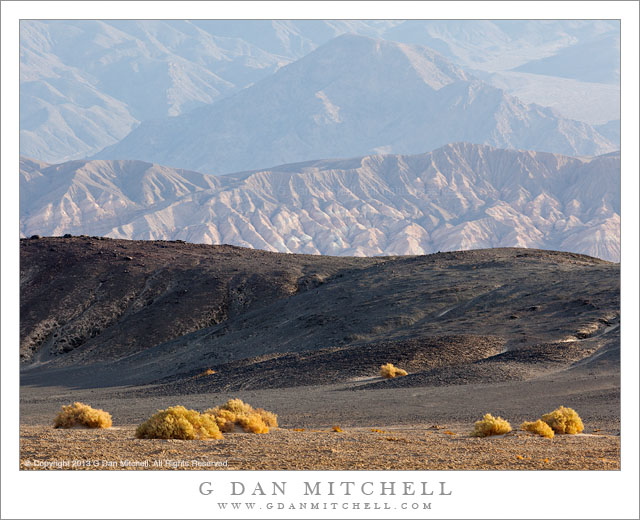Evening Shadows, Pebbles, and Tracks. Death Valley National Park, California. April 5, 2013. © Copyright 2013 G Dan Mitchell – all rights reserved.
The tracks of a passing animal among small pebbles in evening shadows on the dunes, Death Valley National Park
The day before I made this photograph a huge wind/dust storm had swept across Death Valley, raising tall clouds of dust high into the air, blowing away tents and anything else not firmly tied down, and spreading a thin film of dust into cars, tents, sleeping bags, and just about everything else. The idea of a desert dust/sand storm is interesting and exciting, and there are certainly some elements in this weather that are photographically compelling – but the reality is that they can make like quite difficult for a while.
On the other hand, after the dust storm passes, many of the usual traces of human presence are temporarily erased from sand dune areas. So on this evening after the dust storm I wandered out into low dunes away from the more popular areas and saw virtually no human tracks where I ended up. However, I did non-human tracks, perhaps more clearly given that there were fewer of them and they were isolated against the newly clean and smooth wind-blown sand. I just happened to spot these small tracks (a lizard?) as I entered a small “dune” valley. I first noticed the uppermost shape, which reminded me of a small branch or twig or possibly a bit of coral. I soon noticed the more linear track up the middle of the branch-like tracks – a tail? – and thought I might be able to make a photographic composition out of these tracks, a few small rocks embedded in the sand, and some of the early afternoon shadows across the sand.
 G Dan Mitchell is a California photographer and visual opportunist whose subjects include the Pacific coast, redwood forests, central California oak/grasslands, the Sierra Nevada, California deserts, urban landscapes, night photography, and more.
G Dan Mitchell is a California photographer and visual opportunist whose subjects include the Pacific coast, redwood forests, central California oak/grasslands, the Sierra Nevada, California deserts, urban landscapes, night photography, and more.
Blog | About | Flickr | Twitter | Facebook | Google+ | 500px.com | LinkedIn | Email
Text, photographs, and other media are © Copyright G Dan Mitchell (or others when indicated) and are not in the public domain and may not be used on websites, blogs, or in other media without advance permission from G Dan Mitchell.




